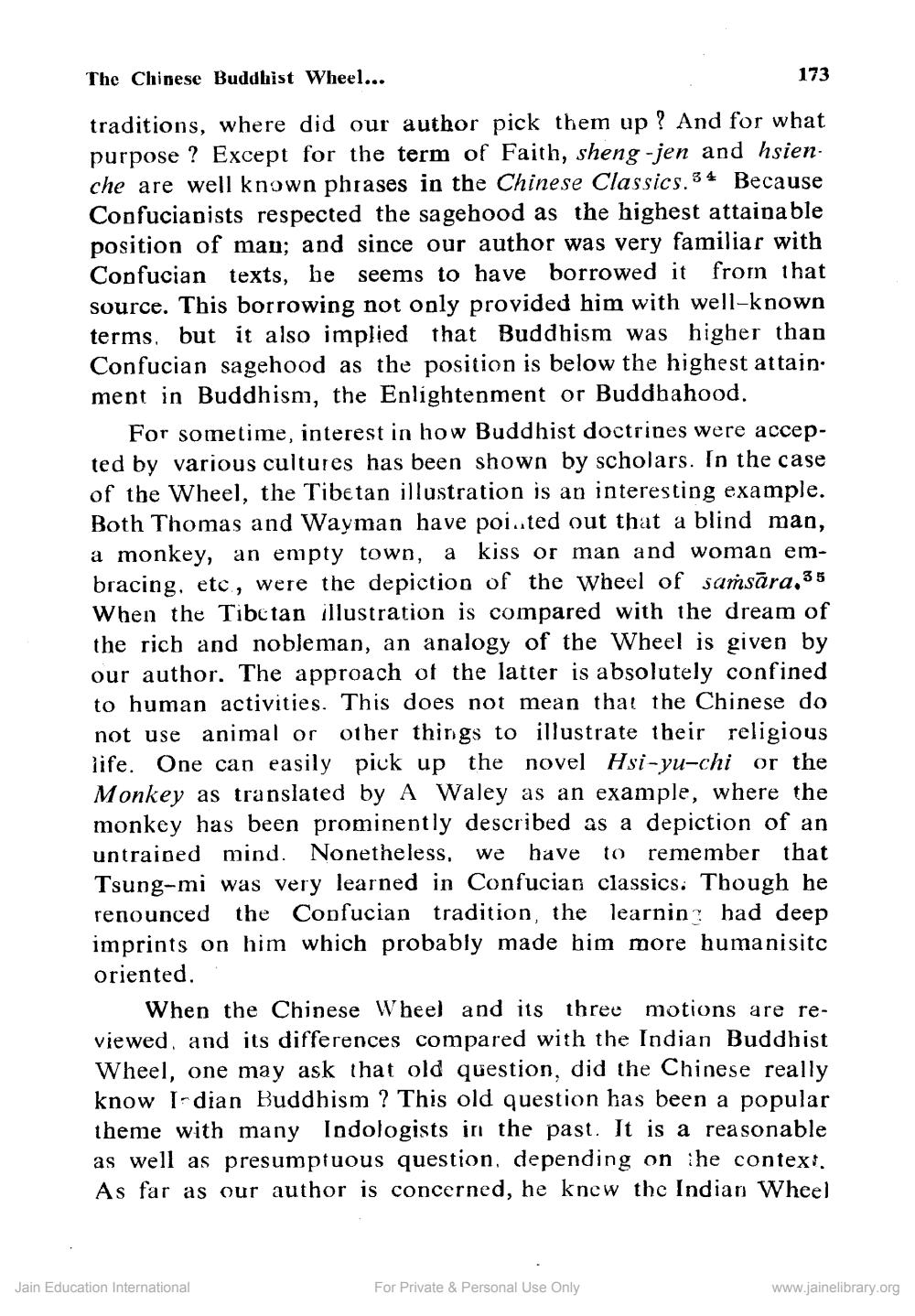________________
The Chinese Buddhist Wheel...
traditions, where did our author pick them up? And for what purpose? Except for the term of Faith, sheng -jen and hsienche are well known phrases in the Chinese Classics.34 Because Confucianists respected the sagehood as the highest attainable position of man; and since our author was very familiar with Confucian texts, he seems to have borrowed it from that source. This borrowing not only provided him with well-known terms, but it also implied that Buddhism was higher than Confucian sagehood as the position is below the highest attain. ment in Buddhism, the Enlightenment or Buddhahood.
173
For sometime, interest in how Buddhist doctrines were accepted by various cultures has been shown by scholars. In the case of the Wheel, the Tibetan illustration is an interesting example. Both Thomas and Wayman have pointed out that a blind man, a monkey, an empty town, a kiss or man and woman embracing, etc., were the depiction of the Wheel of saṁsāra,35 When the Tibetan illustration is compared with the dream of the rich and nobleman, an analogy of the Wheel is given by our author. The approach of the latter is absolutely confined to human activities. This does not mean that the Chinese do not use animal or other things to illustrate their religious life. One can easily pick up the novel Hsi-yu-chi or the Monkey as translated by A Waley as an example, where the monkey has been prominently described as a depiction of an untrained mind. Nonetheless, we have to remember that Tsung-mi was very learned in Confucian classics. Though he renounced the Confucian tradition, the learning had deep imprints on him which probably made him more humanisitc oriented.
When the Chinese Wheel and its three motions are reviewed, and its differences compared with the Indian Buddhist Wheel, one may ask that old question, did the Chinese really know Indian Buddhism? This old question has been a popular theme with many Indologists in the past. It is a reasonable as well as presumptuous question, depending on the context. As far as our author is concerned, he knew the Indian Wheel
Jain Education International
For Private & Personal Use Only
www.jainelibrary.org




